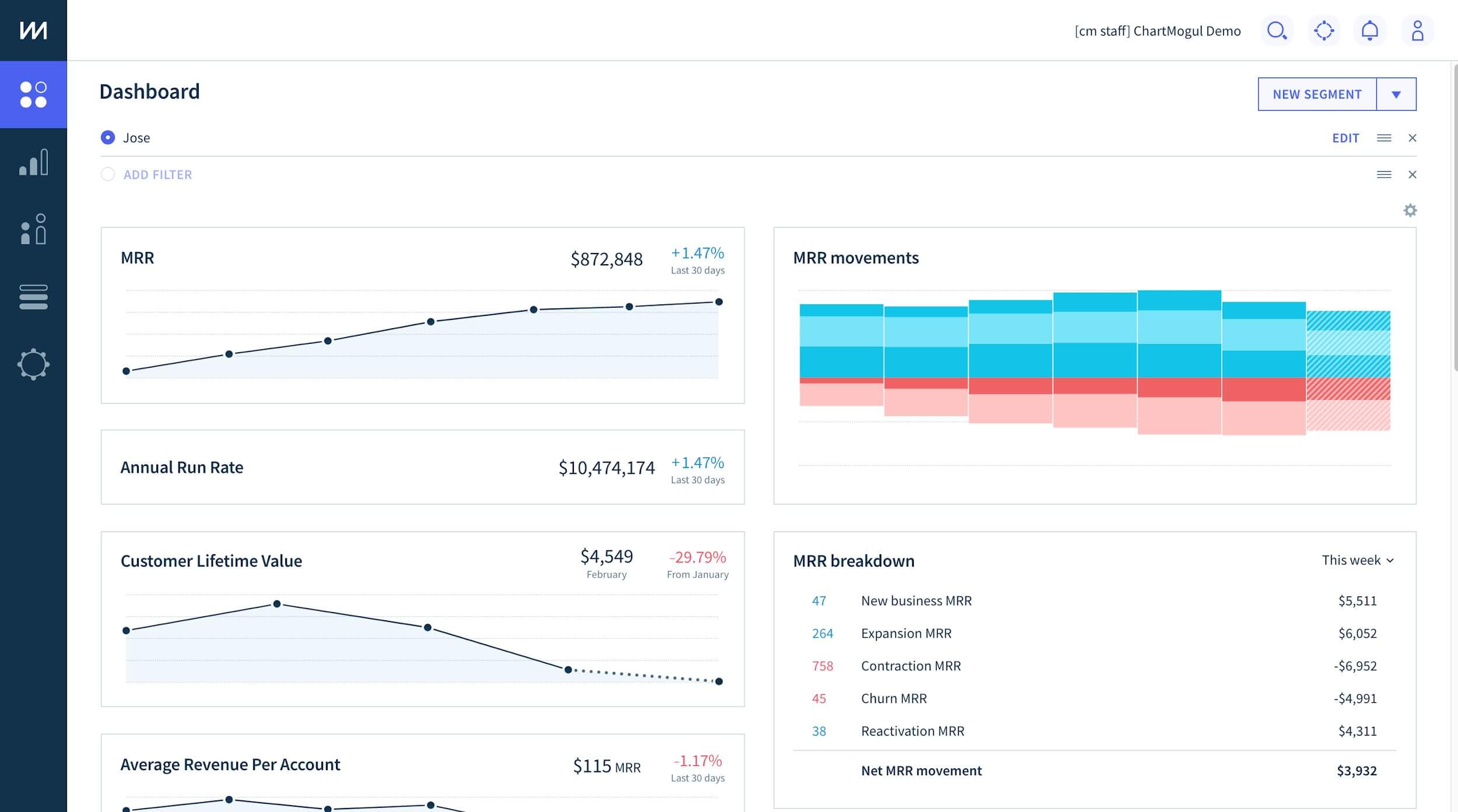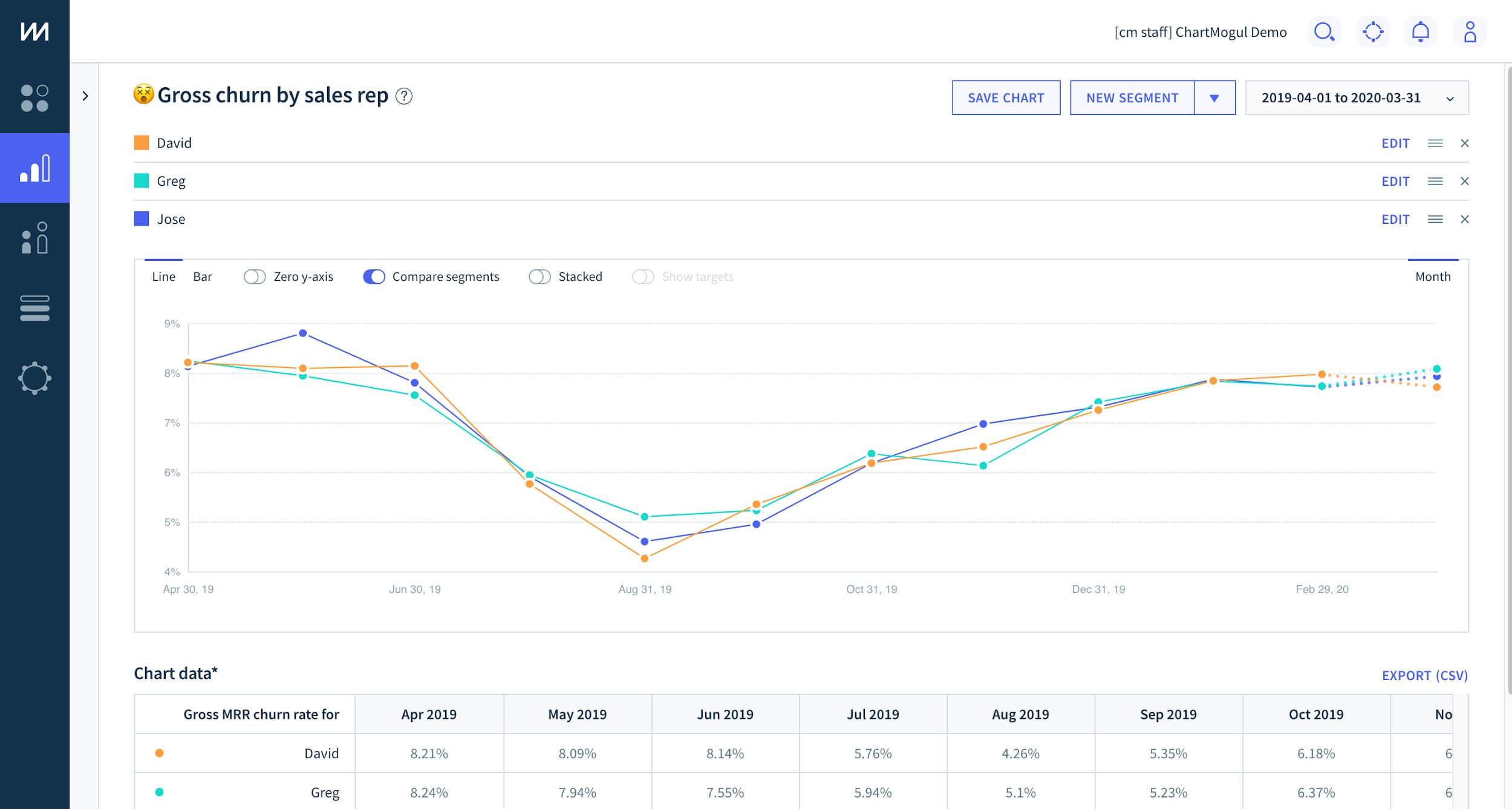Create a Stellar Sales Team Using Nothing but Your Revenue Data

Contents
In the subscription economy, data plays a special role. It can give you a competitive advantage and help you understand what makes your business tick.
Smart businesses understand how important it is to use this data — not just in the C-suite and in the accounting department, but throughout the whole company.
To make use of this valuable data, every team — from product to marketing and customer success — needs a subscription data platform.
Sales leaders are no exception.
If you sell subscriptions, you must adopt a long-term view. It’s the only way to win.

Long-term retention is what makes customers profitable in the subscription economy.
Instead of rewarding your sales reps for closing another deal and bringing on board a customer who churns in a month or two, you should create an incentive structure, which rewards your team for bringing just the right-fit customer, who goes on to remain a loyal user and promoter of your brand.
To achieve this, you need a strong way to track the performance of your reps. That’s hard, but not impossible with the right setup.
In this article, I want to show you how to connect your CRM and subscription data platform to track customers by sales rep. Additionally, you’ll learn how to use that to analyze the performance of your team and compensate them accordingly.
How to combine revenue with sales rep data
The really simple way to do this is by going into your subscription data platform and marking each customer:

Tags and custom attributes allow you to enrich customers with data about sales and customer success reps who “own” them.
My personal preference always leans towards automating repeating tasks. If you share this sentiment, here’s how you can do it:
- Record the information about the representative who’s worked on a given lead in your CRM.
- Create a zap in Zapier that triggers when a deal is marked as “Won” in your CRM.
- Pipe that information into your subscription data platform via a custom attribute or tag.
- Create custom segments for each of your sales reps to see how customers perform.
Let’s get in a bit more detail on the process.
Depending on the CRM you’re using, this can be as simple as just using the “Sales rep” field for each deal or doing some extra work to add a custom field in your CRM, which records the rep working on it.
Note: Here’s a good overview of how to track this data in Hubspot by Kyle Racki of Proposify.
Zapier allows you to connect every major CRM tool and export data from it for use in other platforms.

Zapier connects with 300+ CRM systems
Now comes the fun part.
In the next section, I want to give you a few ideas on how to use this new data you’re adding to your revenue data to analyze and understand the performance of your sales team.
Measuring the long-term effect of sales
The power of a subscription data platform comes from the ability to combine multiple data points and compare them against your revenue data to understand what drives your business.
This kind of analysis is easy to implement for a sales team. Here are some ideas for the types of analysis you can run.
Track key metrics by rep
Set up a dashboard to track key metrics by sales rep.

You can build a dashboard by customer rep for a quick overview of how each one is performing.
Obviously, this is useful for keeping an eye on how your sales reps are doing overall.
Using this approach allows you to set annual goals not just as a sales number, but with smart targets such as retention rate, MRR growth, etc. allowing your team to focus on working the best customers.
Compare performance between reps
Apart from looking at each sales rep in isolation, you should also compare their performance.

Looking at the MRR chart per sales rep gives you a picture of how customers are developing over time.
This goes beyond identifying over- and underachievers, which is the most obvious application of this kind of analysis.
It can also be used to guide your sales model. For example, if your reps are particularly adept at working a particular industry or company size, you can split your team using these criteria.
Identify the best-fit customers by looking at retention numbers
By looking at retention numbers by sales rep you can uncover valuable insight that helps you improve your overall targeting.

If there are differences in retention levels between sales reps, you should work together with your team to find out what’s causing them.
Looking at churn (or retention) by sales rep allows you to identify trends and act on them quickly.
Let’s say you’ve split your team by industry, as we discussed in the previous section. You notice that the customers brought in by one of your representatives consistently churn at a higher rate. Maybe you should re-evaluate whether companies in that vertical truly are a good fit for your offering.
The same type of analysis can be used to assess the impact of specific campaigns — for example you can find out if holiday pricing/discounting creates customer loyalty or people churn as soon as it expires.
The basics of subscription sales compensation
Setting up a smart compensation plan is one of the most important factors to create a successful startup sales team.
That’s why, I want to leave you with a few best practices when it comes to sales compensation in a recurring revenue business.
Set targets based on New MRR created
It’s now common for subscription businesses to have sales teams that carry an MRR target.
This quota is usually based on the value of the new MRR awarded when a deal is closed and payment terms have been accepted by the client.
Sales teams are also usually credited for expansions from accounts they’ve closed. This can be term-limited, for example, closed within 3 months of the initial sale. It can also be awarded for successful upsells, cross-sells, etc.
Use the compensation structure to align sales targets with company strategy
These additional tools allow you to make sure your sales team is going after those leads that are the best fit for your chosen strategy, i.e. those who are most likely to become long-term customers.
You can compensate sales reps more when a customer agrees to attractive billing terms (this is called uplift). For example, if a customer agrees to pay for the entire service period upfront, uplift is 15%.
There’s also the concept of clawback (also known as recovery). For subscription businesses, the full value of acquiring a customer is realized over many months. So, the payout percentage assumes the new business will subsist for a minimum of X months at a price no lower than the one they signed up at.
So recovery (which only applies to the new MRR target) can be ‘clawed back’ from the sales rep MRR target (an compensation) if a customer cancels or downgrades within X months of being a customer. It can be clawed back in full, or more commonly, by a percentage based on the month of contraction or cancellation.
Tracking sales in a recurring revenue business doesn’t have to be hard
No matter what tools you prefer, I hope I managed to convince you about the value of looking at and using your revenue data.
The approach outlined above might be overwhelming at first. I understand that.
But you don’t have to start with the full suite. Take baby steps. Experiment.
Work proactively with your sales reps to understand what they’re struggling with and you can help them.
Soon, you will start to see the results in your dashboard.





